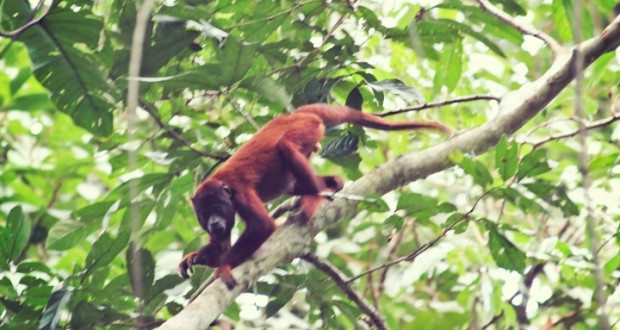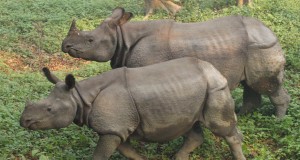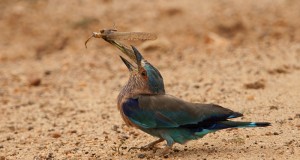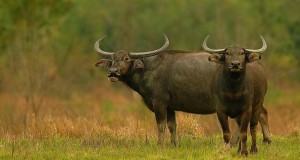To most people, the word jungle conjures up images of dense, lush tropical forest with torrential rainfall, huge trees festooned with creepers, and infested with dangerous animals, snakes and insects. In its Sanskrit origins, the word jungle denotes any wild country, untamed land, a wilderness. How many trees grow on it and how tall, and what and how many creatures live in it. makes no difference. The semi-arid thorny scrub of Yala in Sri Lanka is no less a jungle” than the steaming jungle of Manas in Assam in Eastern India.
At the outset, it should be pointed out that, although the Indian subcontinent harbors a great variety of wildlife, the large assemblies of animals seen so often in the African bush are not seen here. Most jungles of the Indian subcontinent are thick and dense, with poor visibility. Animals living in such closed environments are generally shy and retiring, and live in small scattered groups, or even as solitary individuals.
Perhaps it is also necessary to explain why so many more birds than mammals are seen. Mammals are largely nocturnal, retreating into their hideouts during the day, and are usually silent. On the other hand most birds are diurnal, not so shy of man and quite vocal. Moreover, IF there are far more birds than there are mammals — India alone has about 1200 species of birds a gainst 350 species of mammals. So, while ti spotting a hundred species of birds in a day is not unusual, a mammal list of even 10 species is considered good. But the mystique and the romance of exploring the jungle here, perhaps for this very reason, is greater than anywhere else in the world.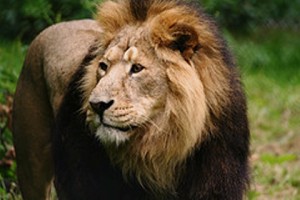
Your Safari Kit Your most invaluable wchoiler onn pa wailndliifoe snafaris a god pair of medium-size compact binoculars. For general purposes, 7x or 8x magnification is adequate, but for bird-watching 10x magnification is better as it brings out details of plumage clearly — so vital for positive identification. Many rare sightings have been missed because binoculars were not easily at hand. So carry your binoculars round your neck, and use them constantly to scan the area around you. You will be surprised how much more you will see if you do.
Another essential item is a three-yard ( )ttpecy hrhraepereto f semepeerearasimuibgrrell, type, with both centimeter and Larch calibrations, to measure anything of interest — dimensions of a den, the size of a track, the height of a claw mark on a tree, for example.
To record your observations, you will need a small notebook in which you may also want to sketch things of interest. Do not forget to mention the name of the place, time and date. In time, in this notebook you will have put together an amazing variety of information.
When to Look for Animals: A national park or reserve is a living museum of nature’s creations — landscapes, rock formations, waters, plants and animals. But unlike in an art or historical museum where objects are on display, here you have to seek out your animals. You have to know where they live, when they move about, how to attract and approach them.
Not unlike men, animals are creatures of habit and have distinct daily and seasonal patterns of activity. An understanding of these patterns increases our chance of seeing them. The frequency of wildlife sightings in national parks and reserves varies, depending on the time of year. The Indian subcontinent is affected by the monsoons (in some areas twice a year), which influences the pattern of vegetation growth and the availability of food and water.
This in turn affects the distribution and behavior of animals. Since the vegetation is overgrown and lush during, and for a few months after, the monsoon, these are not the best months for wildlife viewing in most national parks. Generally, the best times are from February to May. During these months the trees are often bare and the undergrowth dead or regenerating, so visibility is considerably improved. Since there is also a general scarcity of water, the animals concentrate near sources of water. In places where annual grass burning is still practiced, such as in Chitwan and Bardia in Nepal, regrowth of grasses attracts large concentrations of herbivores, who in their turn attract predators.
However, the time of year you choose to visit a park will also depend on what you are looking for. By “best months” is usually meant those in which one is most likely to see large mammals which are the main attraction of most national parks and reserves. But in Chitwan, for instance, the best months for seeing birds are February – March, for mammals March- May, for insects and for the lush jungle June-September, and for crocodiles, who come out of water to bask – in the sun, October-February. The marshes of Bharatpur present a magnificent spectacle of breeding birds during August, September and October.
There are rewards for the nature lover at every hour of the day and night, but for watching mammals you have to follow their daily cycle of activity. They are mostly nocturnal and remain active for two-three hours after sunrise. A night drive can be a very rewarding experience, but is not permitted in most parks and reserves, and rightly so. Animals should have at least some time to conduct their lives without human intrusion. Around 10 a.m., animals retreat for rest and lie in hiding, giving the impression during midday and in the early afternoon that the jungle is devoid of life. But they resume their activities around 4 p.m., filling the jungle with life and activity.
Your safaris are therefore best organized during the early mornings and late afternoons. In the winter, afternoon safaris are better as there is often a thick mist in the morning. Monkeys, like men, are creatures of the day. They are up early and feed for a few hours before their midday siesta, when they sit around contentedly on the ground or in trees. They resume feeding activity in the afternoon and by sundown are ready to go to sleep. Langurs are noisy feeders and not only their calls but also their jumping from branch to branch make a loud noise, so their presence can he detected from a distance. 
Where to Look for Animals: Animals are most conspicuous when they are feeding or at play and the most likely spots to observe such activities are grassy meadows, the edge of forests, at salt licks or near water holes. Herbivores have to feed daily for several hours, and the heavyweights, such as rhino and elephant, have prodigious appetites and may spend 15-18 hours a day feeding, thus making themselves very conspicuous. Open grass meadows and river banks are the favorite grounds of hoofed animals, where the short grasses provide them nourishment. For them the tall grasses are often inedible and therefore of little value, except as shelter. In a forest thick with trees and scant grass, hoofed animals will usually be thinly spread but leafeaters, such as langurs, are usually common. Recently burned patches of grassland and forest attract deer, antelope, wild boar, gaur, buffalo, rhino and other herbivores who come for the new succulent grasses.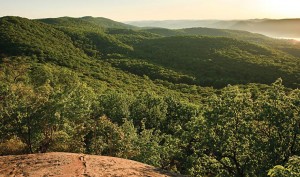
Most mammals have to drink at least once, if not twice, a day. In areas where water is plentiful, such as the floodplains of Chitwan, Manas and Kaziranga, animals are evenly spread out. But in places where water is localized, as in the Siwalik hills of northern India and Nepal, mammals usually stay close to water, especially during the afternoon when they come to drink. In arid areas with scant rainfall, water is in short supply during the summer before the rains, so this is the time to look for animals near the few remaining sources of water. Predators often lie up, in cover, near a water hole and take their chances on the prey species that wander within range. Which also explains why herbivores are so nervous when approaching these spots.
Large animals also use water for cooling their bodies. In the steaming months of May and June, tiers lie in secluded pools in the jungle, and elephants, rhino, buffalo and wild boar also have favorite spots to wallow in the water or mud. Mammals also visit salt licks regularly to replenish their body stocks of vital minerals. Over the years, salt licks become well known to the animals living in the area, and elephant, rhino, gaur. deer, monkeys and others come to them from time to time. A salt lick may be part of a hillside, a patch of earth or clay, or buried in the bed of a spring, lake, river or stream.
How to Conduct your Safari: Dress comfortably, in clothes that permit easy movement, and avoid wearing bright colors that make you conspicuous. Jungle-green, khaki, beige camouflage are preferred for tropical and subtropical environments, but in the Himalaya, where snow is present, light neutral colors may be most suitable. The idea is to blend with the surroundings so that you do not unnecessarily announce your presence from a distance.
Animals are very wary of the human voice. So, in order to get close to them, absolute silence is essential. Walk lightly and, unless in the mountains, avoid heavy boots; sneakers, or running shoes are best.
Animals living in closed environments have an exceptional sense of smell and will detect and avoid human scent. While stalking animals, it is therefore important to stay downwind of them or you will give your presence away sooner than you think, especially if there is a gentle breeze. For the same reason avoid wearing perfumes and, if using insect repellant, choose the kind that smells the least. Also, no smoking, please.
Move slowly, as this gives you more time to look around and you are less conspicuous to the animals, thereby permitting you to approach closer to them. Walking slowly is also safer. A hasty step might bring you face to face with a rhino, Maur, elephant, or tiger — encounters of a kind that is best avoided. In South India, which has a good population of poisonous snakes, it pays to look where you step. Even while in a vehicle, a slow drive gives you the time to scan the area around you.
Most times the animals will spot you first and disappear without your knowing it. There are far more human sightings by animals than animal sightings by humans. Occasionally you will know that you have been spotted when you hear or see animals bounding away. They may even give an alarm call which will convey a warning to other creatures. But if you spot them first you should move cautiously, using every bit of cover to your advantage, freezing every time they look in your direction. A deer or antelope will soon get your wind and will try and pinpoint you with its nose, eves and ears.
Some animals are inquisitive and may even come towards you. But under no circumstances should you stalk or go close to large carnivores and other potentially dangerous animals. Most animals will retreat at the sight of man but the large animals may have good reason not to. A leopard or bear may be guarding her cubs, for example. Under these circumstances they are likely to warn you with a noisy snarl before you come too close. If you do not heed that, it is at your own risk.
Some drivers and guides, in the heat of excitement, will take you dangerously close to potentially harmful animals. Or perhaps because you want a close-up photograph. This kind of drama should be discouraged as casualties are likely to occur if you violate the personal space of wild animals and make them feel vulnerable. In a national park or reserve their welfare comes first and disturbing, harassing or unnecessarily provoking them is taboo.
On a nature walk, keep your senses on the alert. Most animals blend extremely well with their environment. The spotted fur of the leopard breaks its contours and is invisible in the light and shadow of the jungle. Even the giant elephant merges with the gray tree trunks and the undergrowth. But don’t get obsessed with seeing animals: the imagination can play tricks and you may start “seeing animals” that are not there. A rock on the mountainside may become a black bear! And a black bear a rock!
Two ways to maximize your chances of seeing animals are: • to watch them from a hide or blind, locally known as a machan, where you wait for them to come near you while you are hidden from their view; and • to actually go out in search of them by vehicle, elephant, boat, or on foot. This may sound simple, but to get the best results requires deep knowledge of the wilds and its denizens.
Machan: A machan, as explained, is a hide or blind in a tree or on the ground. When on the ground it resembles a hut with several peepholes to look out from. They are best made from local materials — trees, bamboo, grass, leaves, stone, or mud. A good temporary or mobile machan can be made of canvas or burlap stitched to size, with custom-made windows and exit door. It can easily be put up with the help of sticks or its own set of aluminium poles. It should be jungle-green or light brown in color or with camouflage pattern to break its outline. Such a collapsible machan is essential to the wildlife photographer. The idea of a machan is to become so inconspicuous that animals come close to you without detecting your presence. In this respect, a tree machan has the advantage that, apart from providing a better lookout point, human scent disperses from it more rapidly into the upper air than from a ground machan.
In an area where wind or breeze is a constant factor, especially during the mornings and afternoons when you are most likely to use a machan, it is best sited downwind from where the animals appear. A machan must also not stand out from the surrounding landscape if animals are to approach it without much hesitation. If situated in a thick jungle, it is usually hidden and camouflaged by foliage; if in an open area, it may be so placed as to appear to blend with a natural structure such as a termite mound or rock outcrops.
A machan usually overlooks a natural water hole or a salt lick (either or both may be artificially created if necessary), and occasionally open ground with a long view. Unless water is plentiful in the area, machans overlooking water holes are very productive for spotting animals. Smaller animals such as porcupine, can be attracted by regularly leaving some potatoes and other vegetables on a spot frequented by them during the night. Carnivores, such as tiger and leopard, can be baited by using a chunk of meat or by tying a buffalo calf or goat in their path. But, whatever the advantages of Machans, from them you can only hope to see the animals that chance to come by. When you go out in search of them, whether by landrover, on elephant back, by boat, or on foot, in full view of the animals that you seek, while you have the freedom to look for them in the most likely spots, you also run the risk of announcing your presence and warning them away.
Safaris by Landrover and Elephant: For some unknown reason, most wild animals seem quite indifferent to the sight and sound of a vehicle and during the night the headlights seem to mesmerize them. In fact, it is amazing how close you can get to some animals by vehicle. As the sound of the engine does not seem to bother most animals, it is best to keep the engine running as this not only drowns human noises but also ensures speedy escape if your subject happens to be big and angry. Animals may accept the presence of your vehicle, but this does not mean that they will continue to “cooperate” if you step out of the vehicle. Why animals should tolerate such an alien object and bolt at the sight of man, no one knows. Perhaps vehicles, although strange, do not seem dangerous to them, whereas they have a long history and tradition of the need to avoid man.
Vehicles have the advantage that you can cover a large area in a relatively short time. Tracks in the parks are rough and you may need to cross streams, rivers and muddy places and they give you quick and easy access to the best spots for viewing animals. But vehicles will only take you where there are roads and since driving on roadless tracks is usually not allowed in most national parks, you will have to resort to other means — elephant, boat and walking.
Elephants have long been used for hunting, and more recently for forestry operations, wildlife management and wildlife watching. Nepal and India must be among the few Asian countries to employ elephants for wildlife tourism.
Elephants have the advantage that they can go to places where no vehicle, boat, or man on foot can go. They will climb up hillsides, negotiate steep banks, and walk through marsh, swamp and thick jungle. In fact, were it not for the elephant, tall grasslands, like those found in Chitwan and Kaziranga, would be so much more difficult to explore safely. Elephants, however, dislike and avoid deep rivers and strong currents and quicksands. They give you a feeling of security and, although they are quite timid by nature, few animals will attack them. Rhino and tiger have been known to, under provocation, but perched on the howdah, 10 feet (three meters) from the ground, you are quite safe. The only disadvantage is that elephants move slowly and therefore you can only cover a small area in each outing.
Despite the human smell and noise, most animals tolerate people on elephants. In fact, even the keen-nosed wild elephant will allow a man on a domesticated elephant to approach and sometimes even mingle with the wild herd. (In Mela Shikar, men on trained elephants display much daring in capturing wild elephant by actually mixing with them and cleverly sneaking behind the chosen candidate for capture and chaining it with a noose. It will then quite happily follow the domestic elephant — with a little encouragement.)
Elephants with their keen nose constantly pick up smells left by other animals. Being the largest creature in the Asian jungle, they will ignore most animals but they have an instinctive dislike of large carnivores. If such an animal is nearby, an elephant might resist going towards it, but it will show no fear of an immobilized (drugged) tiger or a dead one. It also dislikes going close to gaur, buffalo and rhino.
Signs in the Jungle: Wildlife observation may be direct, when you actually see the animals in their natural state, or indirect, when you “observe” their presence or passage by their spoor, scats, shelters, smells, sounds and so on. The jungle is full of such signs but their interpretation is not simple; therefore only the most obvious are mentioned here.
Look for markings on trees in the jungle. Deer rub their antlers against small trees, usually to clear their velvet, and leave distinct marks of injury. And depending upon how high the marks I are from the ground, one-four feet (30 120 cm), you can make a good guess as to which deer species was responsible for it. In rhino country, rhino rubbing posts are frequently encountered. They are usually three-five feet (about 1 1/2 meters) above the ground on a sloping tree trunk or stump. From regular use, the rubbed area becomes smooth and devoid of bark, often with a coating of mud. In elephant country, trees with stripped bark, uprooted trees, and twisted branches betray their presence. Bears and leopards leave distinct claw marks on the trees they climb, and tigers habitually rake their claws on trees, leaving deep gashes, sometimes with fragments of claw in them. Other cats also indulge in this form of marking/cleaning.
A forest floor littered with fresh fallen leaves and twigs indicates the feeding activity of langurs. Chita] often take advantage of this “free lunch” and follow the monkeys who feed in the treetops. In the jungle all kinds of cavities and holes may be seen in rock, on the ground and in trees. These are often shelters or dens used by a variety of animals and birds. Most carnivores live in burrows. They either dig these themselves or appropriate existing holes and cavities. Porcupine warrens are elaborate systems of tunnels under the ground usually with two or more entry and exit points. They are often recognized by the gnawed horns, bones and antlers lying at the entrance.
Wild boar rootle the ground for food and leave tell-tale patches of loose upturned earth. Sloth bears dig up termite mounds at their bases and suck up the insects. These diggings may be three feet (one meter) deep, and sometimes even larger craters may be excavated by them in search of choice food.
Elephants have an exceptional nose and where water is scarce will locate subsurface water, dig a i hole with their forefeet and drink the clear water that collects at the bottom. Other animals use these “water holes” after the elephants have left. Otters live in burrows with an underwater entrance although their living chamber is above the water level. Their burrows are usually at the bases of trees, among the roots. Even large carnivores like brown and black bears hibernate in cavities during the winter. Contrary to popular belief, tigers and lions do not live in caves or dens, although occasionally they may use them as shelter. Tiger “dens” are usually very secluded spots in the forest or tall grass where they are least likely to be disturbed.
A common sight on most steep river banks are holes used as nests by the sand martin. Bee-eaters and kingfishers also nest in burrows. The tailor bird stitches a nest out of one or more leaves, and the weaver makes a graceful nest hanging from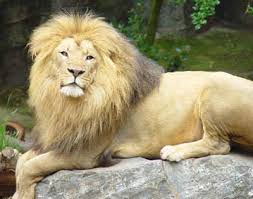 a branch. The most interesting nest is made by the gianthornbill . The male seals his mate in a hole in a tree, using a plaster of clay and debris, leaving a small opening through which he feeds her. When the chicks hatch and are large enough, the wife breaks open the wall and emerges. The couple then replaster the opening and continue to feed the chicks through a hole until they are ready to come out, when the wall is broken once again, and the family set out into the jungle.
a branch. The most interesting nest is made by the gianthornbill . The male seals his mate in a hole in a tree, using a plaster of clay and debris, leaving a small opening through which he feeds her. When the chicks hatch and are large enough, the wife breaks open the wall and emerges. The couple then replaster the opening and continue to feed the chicks through a hole until they are ready to come out, when the wall is broken once again, and the family set out into the jungle.
The shape, size, color and smell of mammal droppings can give clues to which animals live in the jungle. Local tribals and trackers are often very knowledgeable about droppings. The contents of herbivore droppings give useful indications of the plant species eaten, and carnivore droppings of the species of prey consumed. Exceptionally, you may find something particularly interesting, such as the claws of tiger cub or leopard in tiger droppings.
Some animals, such as civets and weasels, habitually defecate at “latrines” and, in time, large piles are formed. Large quantities of wolf droppings may be found near its den. Rhinos also have dung piles which, after months, even years, of use become huge accumulations. Some animals, such as the red fox and the otter, defecate at prominent spots, such as on stones, a fallen branch, or on top of a mound. Birds of prey, herons and owls, regurgitate matter from their mouths. These distinct pellets, consisting of bone, feather, hair and other indigestible matter, are often found in large numbers below a favorite perch or roosting site.
The sounds in the jungle often give clues to the identity of the animals producing them. With training and long experience you learn to recognize the sounds of most birds and mammals. In fact, identification of a bird is sometimes easier from its call than from its sighting, and elusive birds, such as cuckoos, are far more often heard than seen. Birds of the night, such as owls and nightjars, are difficult to recognize but have very distinctive calls, making it possible to identify them instantly.
The roar of a lion, the alarm call of a sambar, the trumpeting of an elephant, the whistle of a wild dog, are all sounds betraying their identities. Some sounds will tell you more. The bugling of a hundred barasingha stags will tell you that their rutting season is on. If you hear rhino huff and puff, snort and grunt, thundering about in the tall grass, and then a peculiar whistling sound, you know that two rhinos have had a dispute; or perhaps a male is chasing a reluctant female. The alarm call of a peafowl or a deer often indicates the presence of a tiger or leopard. The rhesus will bark agitatedly and the langur makes the distinctive call (kha-ko, kha-ko-kha) which almost invariably means tiger or leopard.
Carcasses of the kills of large predators are often betrayed by vultures, crows and blue magpies. By mid-morning, the vultures riding the thermals in the sky spot the carcass or the excitement of crows, and are attracted to it, and within the hour dozens of vultures descend on the carcass out of the sky. If you see vultures heading in a particular direction and follow them you will certainly come upon a dead beast or its remains. Approach a carcass with caution, especially if the vultures are in the nearby trees or on the ground at a distance. This often indicates that a large carnivore is nearby. Hungry tigers can be possessive of their kills and, although they usually retreat at the sight of man, they might not.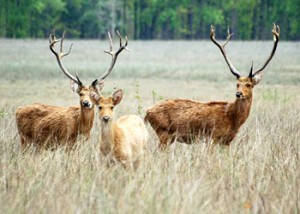
Tracks around the kill will indicate which carnivore or scavenger has been feeding on it. Leopard and tiger kills may be distinguished by the size of canine punctures and the gap between them, these being always larger and wider in the case of a tiger. The tiger begins to eat from the hind-quarters, the leopard from the stomach or chest. The tiger’s feeding is quite clean, with the alimentary canal left unpunctured, but the leopard is a messy feeder. Leopards usually take their kills into trees, especially when in open areas, in order to protect them from other predators and scavengers. Tigers, on the other hand, stay near the kill for up to several days, depending upon the size of the carcass, and will resent intrusion and often rush at the vultures and manage to kill one or two. In order to hide the carcass from competitors, the tiger covers it with earth, twigs and other debris. Lions are communal feeders and usually finish the kill in a single sitting and so do not need to guard or stay near it.
Tell-tale Tracks: All terrestrial animals leave i mpressions of their feet on the ground as they go about their business. A good tracker, by looking at the tracks and trail (a sequence of tracks), can often tell the species, age, sex and speed with which the animal was moving.
Primitive tribal groups, who still supplement their diet by hunting, are very knowledgeable about the natural history of their area and have the knack of reading tracks and other signs with accuracy. A reliable interpretation of the signs in the wild gives them clues as to where to put traps, what kind of traps and what bait to use at what ti me of year and day.
Roads, banks of rivers and lakes, the seashore and snow are the best places to look for tracks. But not all tracks reproduce faithfully and in fact those made by the same animal may look different, depending upon the hardness of the ground and the gait of the animal at the time. In deep mud and soft sand or snow the tracks are indistinct and larger than life, whereas on harder ground they will be more realistic and show details of the contours of the feet. If the animal is running, the tracks will show a slide mark towards the direction of travel, the slide being more pronounced on soft ground. The toes or hooves will often splay for better traction and the impact itself will cause the tracks to be larger. In deep snow or sand a running animal will leave quite unrecognizable tracks.
An early morning walk is the best time to study tracks as at that time they are fresh and well preserved. As the day wears on, tracks are gradually obliterated by the action of the elements, and by the activities of man.
In an Indian jungle the most conspicuous tracks are those of the tiger and by following a fresh tiger trail you can learn about its doings of the previous night. Track one with the help of a professional tracker or guide and you will be amazed at the information he will be able to infer on the animal that made them. From the size of the tracks he will perhaps infer that it is a male and, if he has tracked tigers regularly in that area, even identify which male. Soon you will be shown where the tiger sat for a while, where he started to run, and began to stalk. From time to ti me, you will scent a strong musky smell and a closer examination will reveal that the tiger has been marking his trail with a spray of urine.
Here the tiger has scraped the ground with his hind paws and defecated, leaving evidence of what he has eaten. Halfway down the road his trail mixes with those of a female and as the tracks of both are equally fresh, we know they were together. Tracking, if expertly done, will sometimes lead to the animal itself, its kill or den. When you see a track you may want to sketch it, but this is easier said than done. A simple method is to use a rectangular plate of glass 8″ x 12″ (20 cm x 30 cm), in a wooden frame, the molding of which is about a quarter inch above the surface of the glass. When you place this tracer flat on the ground over the track, the glass will be slightly raised and the track will remain intact. Now with a medium-point black felt pen and with your eyes vertically over the track, trace its outlines on the glass exactly as you see them. Then trace the track from the glass on to thin tracing paper, and you have a permanent record of a track, lifesize.
In a national park or reserve, ideally, nothing should be removed. Even such seemingly valueless things as antlers on the forest floor, or a dead log, have their role in the scheme of nature. In a way they are as much a part of the jungle as the deer and the tree that shed them. The antler will provide minerals to porcupines, rodents, etc., and the deadwood will sustain a number of insects. Later, when the antler and the deadwood have disintegrated, they will return the minerals to the soil. And so, in a cycle of life and death, nature in all its glory should survive intact as we see it in the jungle.

